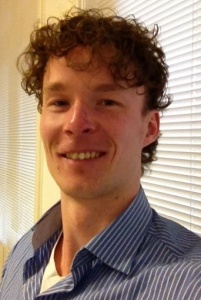Today we jump “across the pond” to Holland for our PT Profile. Nils Oudhuis, creator of the popular “Trust Me I’m a Physiotherapist” Facebook page, finished physiotherapy school in 2011 and is currently studying for his master in manual therapy at the SOMT at Amersfoort, Holland, where he’s dedicated to strengthening his techniques, clinical reasoning and decision is making skills. Why did we ask Nils to be a part of our PT profile series? That’s simple. Each of us, on every continent, are seeing fundamentally different patients, practiced varied approaches and consume, well, far too many articles on research. So let’s dive in, shall we?
Nils, where do you practice?
I work at FysioVeenhoven, a small practice in Amsterdam, for three years now.
I was always interested in biology and the human body. I liked sports and wanted to help people. Physiotherapy is where the those come together.
Tell us about a particular challenge you faced with a patient that together (or along with helpful colleagues/mentors) you were able to find a solution to.
There was a 23 year old guy with low back pain with radiating leg pain going on three years. A chiropractor had just sent him to a back clinic to do surgery for his “herniated disc.” While sitting or standing he couldn’t stop moving, trying to stretch the pain away.
Straight leg raise was positive at 30 degrees. No sensory or motor deficits.
I didn’t think it was a herniated disc, because of his presentation of constantly moving, no neurological deficits, and no sharp, shooting pain through his leg. The pain was more dull, slowly moving in his leg, like referred pain.
I found some triggerpoints in his gluteus medius and minimus, which could explain the referred pain. Hip external rotation was very limited. The treatment was: pain education and I told him to sit on a tennis ball and massage his triggerpoints.
The next week he reported that after 30 min. on the tennis ball he had a lot of pain, and he couldn’t get out of bed, but that night he went to a concert and the next day everything was fine. Pain was gone.
The next few sessions were about improving his lumbopelvic control with pelvic tilts and hip hinges.
The pain education helped him too, the last few months I have been reading the work of Moseley, O’Sullivan, Nijs and it is really interesting!
Do you participate in continuing education and new manual therapy techniques? What is your philosophy on lifelong learning and/or collaborating with other physios?
I am still studying and practicing manual therapy techniques almost every day. I want to continue this for the rest of my working life, and maybe beyond that too. We should never stop learning.
I like to collaborate with other physios and talk about patients to learn from them, and sometimes let them know about the latest evidence and best practice.
Did you/do you have any influential mentors?
Paul Metselaar has been my mentor during my final internship of physical therapy school. He taught me a lot about the clinical reasoning process, which the SOMT adapts too. The 30-week period was very tough for me. I literally changed as a person in a positive way during that time. Sometimes you have to go through the roadblocks in life, and not go around them.
I’m really grateful for my internship with Paul, I am now a better physiotherapist.
What is it that makes you a physio worth seeing?
I try to find the cause of the pain. I always ask myself: “Why?” Why does this person experience pain, for example, in the knee?
That’s how people really get pain free and stay pain free. I give my patients exercises to do at home, and encourage internal locus of control and self-efficacy.
For me, it is important to see a patient as a human being, not as a machine that we can “fix.”
Manual therapy can help to guide the person in the right way, but it is often not the only solution.
What advice would you give to new physios/physical therapists?
Most of the time the real cause of the pain is somewhere else than where it hurts. But I’m actively searching to find new information for my patients and for the PTs who interact with my Facebook page. When you find something interesting, you learn more about it, and share it.
So my advice for PTs, in addition to continuing education in manual therapy, is to create a blog, facebook page or twitter account where you can follow all the influencial people in the world of physiotherapy and learn and improve everyday.
Thanks so much for chatting with us Nils! Follow Nils on Twitter (@trustmephysio) or Facebook for regular insightful PT info!
And if you’re looking to become a master of manual therapy, NAIOMT’s upcoming post-professional manual therapy courses taking place across the U.S. can be found here. 🙂


One thought on “PT Profile: Nils Oudhuis”